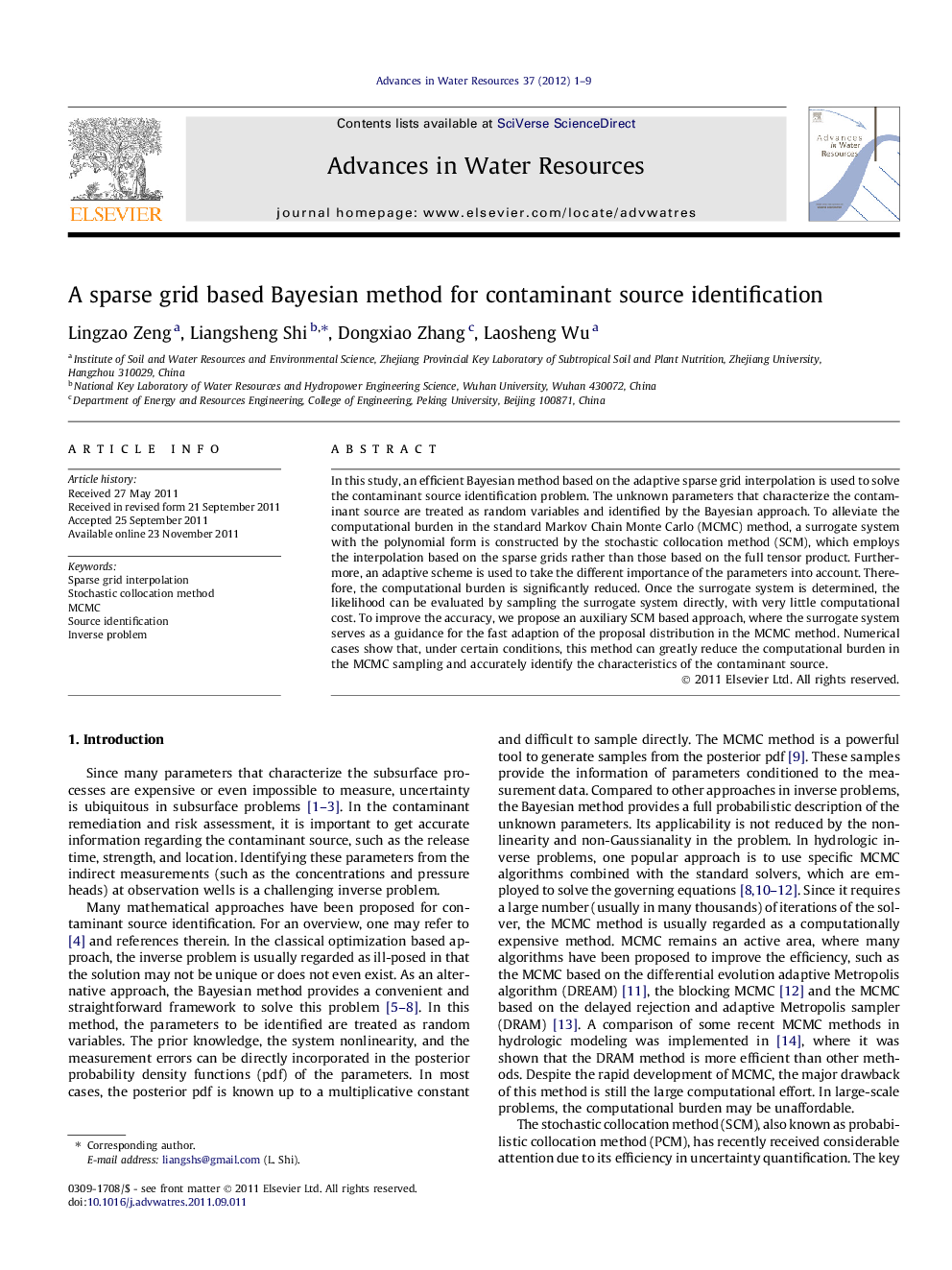| Article ID | Journal | Published Year | Pages | File Type |
|---|---|---|---|---|
| 4525976 | Advances in Water Resources | 2012 | 9 Pages |
In this study, an efficient Bayesian method based on the adaptive sparse grid interpolation is used to solve the contaminant source identification problem. The unknown parameters that characterize the contaminant source are treated as random variables and identified by the Bayesian approach. To alleviate the computational burden in the standard Markov Chain Monte Carlo (MCMC) method, a surrogate system with the polynomial form is constructed by the stochastic collocation method (SCM), which employs the interpolation based on the sparse grids rather than those based on the full tensor product. Furthermore, an adaptive scheme is used to take the different importance of the parameters into account. Therefore, the computational burden is significantly reduced. Once the surrogate system is determined, the likelihood can be evaluated by sampling the surrogate system directly, with very little computational cost. To improve the accuracy, we propose an auxiliary SCM based approach, where the surrogate system serves as a guidance for the fast adaption of the proposal distribution in the MCMC method. Numerical cases show that, under certain conditions, this method can greatly reduce the computational burden in the MCMC sampling and accurately identify the characteristics of the contaminant source.
► The source identification problem is solved in the Bayesian framework. ► The adaptive sparse grid based interpolation is used to reduce the computational burden in the MCMC sampling. ► The auxiliary SCM based MCMC is proposed to improve the accuracy. ► Numerical cases show that this method can efficiently identify the unknown source.
